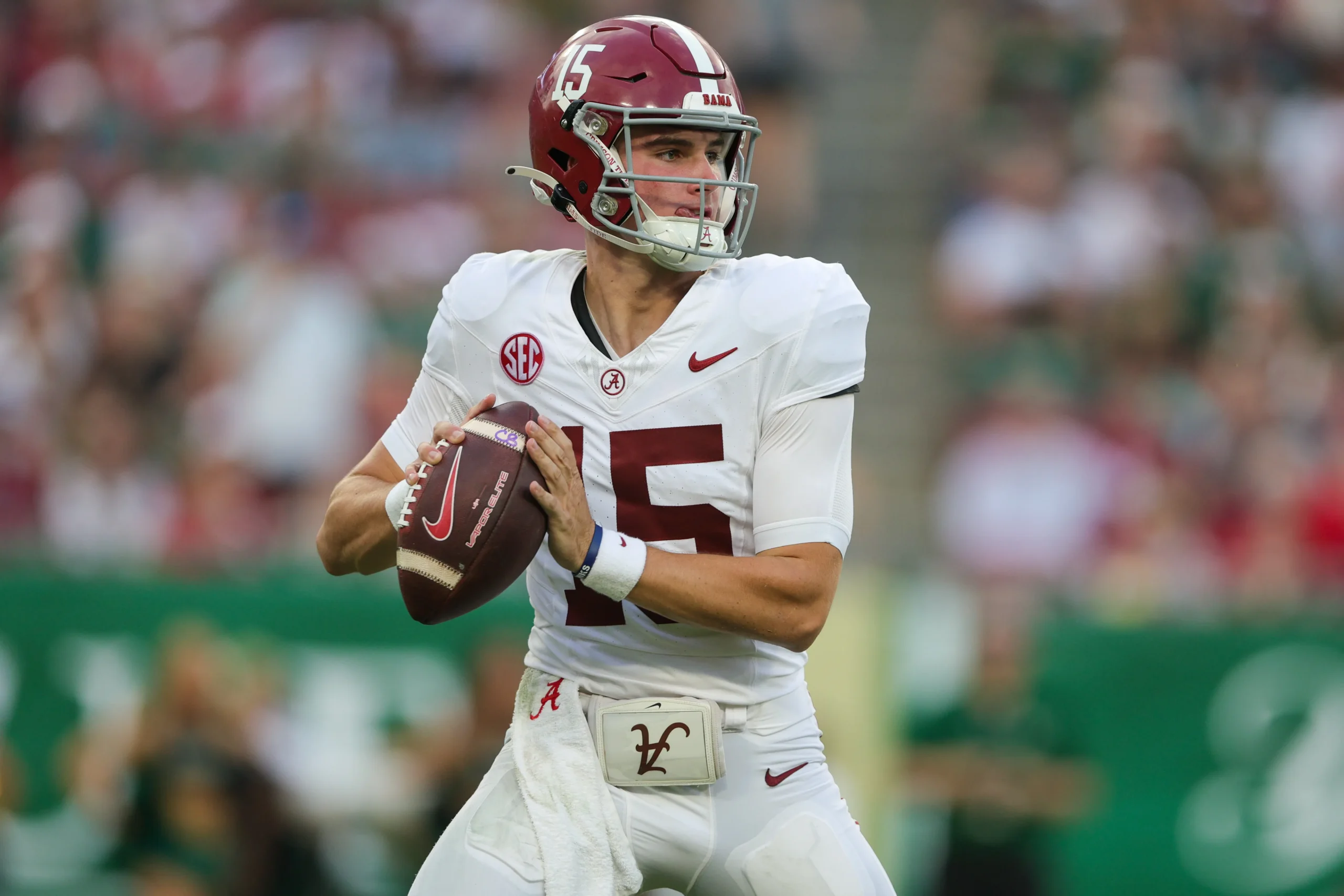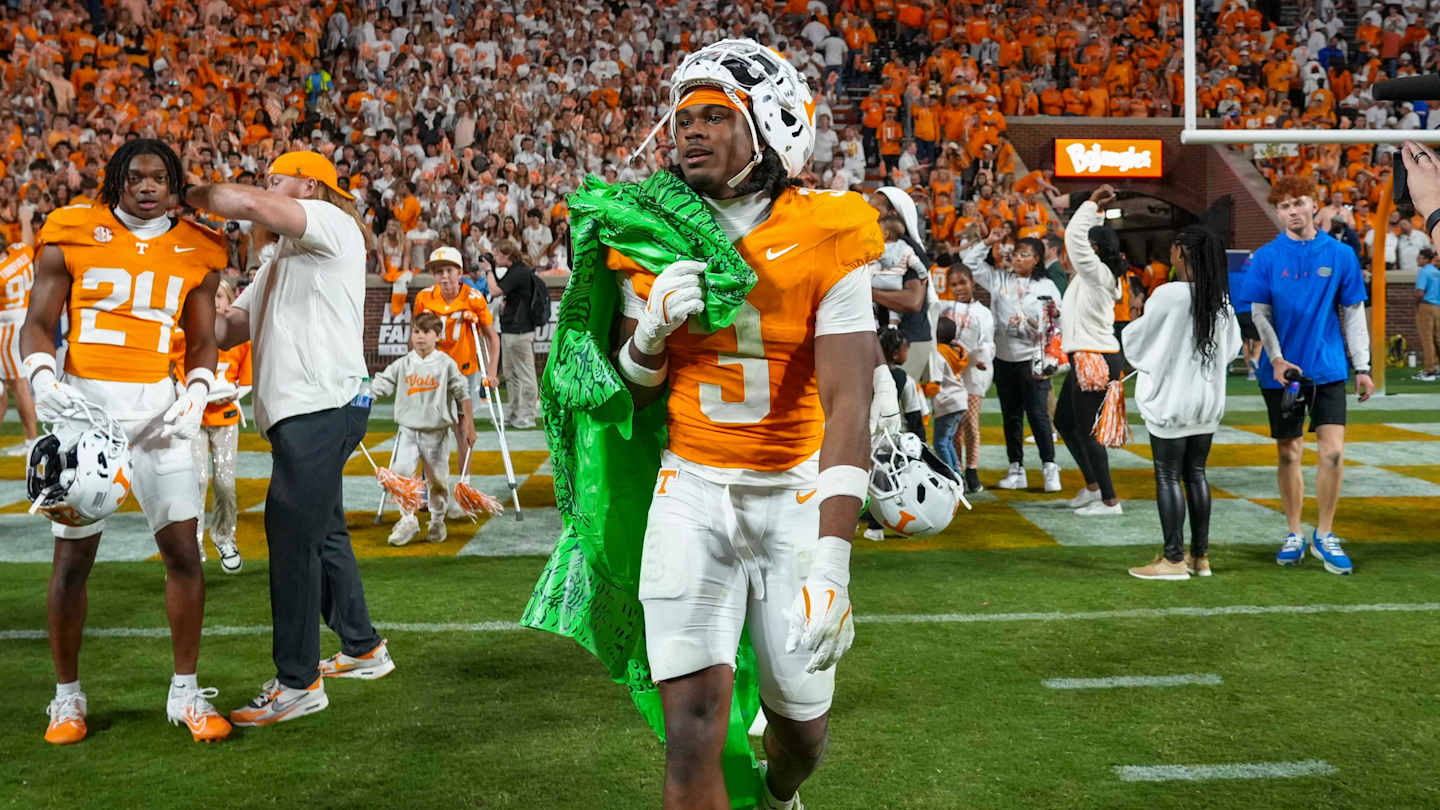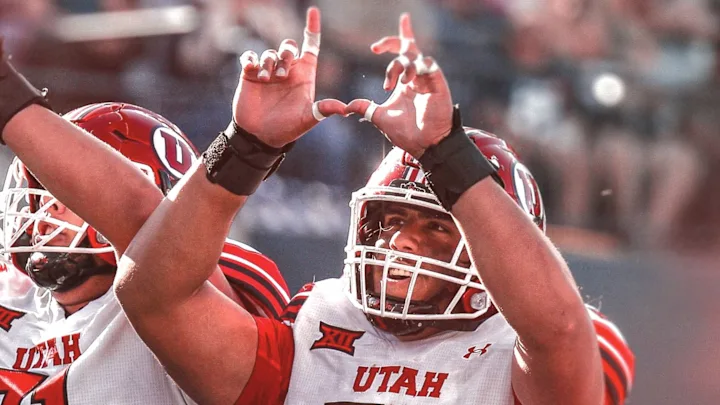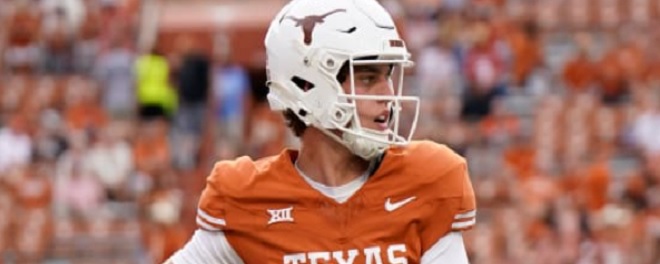By Charlie Campbell.
Send Charlie an e-mail here: [email protected]
Follow Charlie on Twitter @draftcampbell for updates.
This page was last updated March 16, 2017. Follow me @walterfootball for updates.
Position Review: Safeties
Safety Class
Early-round talent: A
Mid-round: A
Late-round: B+
Overall grade: A
2017 prospects vs 2016
Malik Hooker
Jamal Adams
Karl Joseph
Keanu Neal
Jabrill Peppers
Obi Melifonwu
Marcus Maye
Budda Baker
Sean Davis
Vonn Bell
Marcus Williams
Justin Evans
Kevin Byard
Darian Thompson
Justin Simmons
Miles Killebrew
Two years ago the safety class was terrible, and last year, it was better but not special. Finally, the NFL is enjoying a superb class of safeties coming into the league. There could be a dozen safeties who legitimately go in the first two days of the 2017 NFL Draft. The top eight safeties for the 2017 class are likely to go in the top-64 picks, whereas last year, the top eight safeties stretched into Round 4.
In merging these classes, Hooker and Adams are better prospects than Joseph or Neal. Hooker and Adams are legit top-10 talents, while Joseph and Neal were top-20 selections. Peppers and Melifonwu are mid-to-late first round caliber prospects. Maye and Baker are solid second-rounders who are better prospects than Davis and Bell. Williams and Evans could go in the second round as well. Thus, they are ahead of the third (Byard, Thompson, Simmons) and fourth-rounders (Killebrew) of the 2016 NFL Draft.
Beyond the top eight, the 2017 NFL Draft has some other excellent safety prospects who could be steals on Day 2 and in the mid-rounds. Those prospects include Michigan State’s Montae Nicholson, N.C. State’s Josh Jones and St. Francis (PA)’s Lorenzo Jerome.
Safest Pick: Malik Hooker, Ohio State

This was a slam-dunk easy pick with Hooker. As a safety, he looks like a special player with the ability to be a true ball-hawking single-high safety in the deep part of the field. Hooker has great instincts to create a lot of interceptions. Hooker has size and speed to defend against tight ends and big wide receivers, tackle running backs in the box, and lock down the deep part of field.
Previous Picks:
2016: Jalen Ramsey
2015: Landon Collins
2014: HaHa Clinton-Dix
2013: Kenny Vacarro
Biggest Bust Potential: Jabrill Peppers, Michigan

This was a tough decision because no safety stood out to me with bust potential. I chose Peppers because he could be selected in the top-60 picks, but I see some issues to his game when studying him. Peppers has issues in pass coverage as he gets caught flat footed because he is so aggressive to try to attack the run game. He also looks a little slow to react in off-man coverage to flip his hips and run. There were times when slot receivers and tight ends achieved some separation because of that, even though they shouldn’t because they aren’t as athletic or fast as Peppers. Another issue is that Peppers made only one interception in college, and that came on a deflected pass.
The media has been busy overhyping Peppers to a degree. Sources say they are projecting Peppers to be a hybrid dime linebacker and safety, similar to Arizona’s Deone Bucannon. Peppers could go in the middle to late portion of the first round of the 2017 NFL Draft, but slipping to Round 2 is possible. I think his transition to the pro game could be problematic and he might not live up to his draft slot.
Previous Picks:
2016: Darian Thompson
2015: Gerod Holliman
2014: Ed Reynolds
2013: Eric Reid
Safety Rankings by Attributes
Man Coverage:
NFL prototype: Earl Thomas, Seahawks
- Budda Baker
- Obi Melifonwu
- Malik Hooker
- Jamal Adams
- Jabrill Peppers
- Marcus Maye
- Marcus Williams
- Justin Evans
Recap: The NFL is a passing-driven league, and safeties with the ability to play some man coverage are a hot commodity. Many safeties are too stiff to match up against a slot receiver, a tight end or a receiving running back. Offenses seek out those mismatches, so good safeties have some man-coverage ability.
Baker has the speed, athleticism and flexibility to play some slot cornerback. He can walk down to defend slot receivers or tight ends, plus is a natural defender in space with excellent feet. Baker’s coverage skills would have him be a first-round pick if it weren’t for his lack of size.
Melifonwu showed the ability to play tight press-man cover skills at the Senior Bowl, and he is a real weapon in pass coverage. Scouts have told WalterFootball.com they think that Melifonwu could be a great weapon to go man to man with big receivers like Mike Evans or Kelvin Benjamin. These scouts say he is as big as them and faster then them. Receiving weapon tight ends are another mismatch who Melifonwu could negate in man coverage. Thus, Melifonwu’s cover skills make him a real asset.
Hooker could end up being among the best at playing man in the NFL. He didn’t play a lot of that technique in coverage because he was the deep free safety, but he showed the ability to run with receivers downfield. Hooker is very capable to cover up receivers in the deep part of the field without help.
Adams did well in man coverage as a junior. He was very impressive matching up against Ole Miss’ Evan Engram and shutting down that receiving weapon. Adams has the ability to play man, but seems to prefer being in zone in the middle of the field.
Peppers and Maye both have the skills to cover slot receivers and tight ends in man coverage. They have some occasional hiccups, thus they are rated lower. Williams is similar to those two and could help with man coverage in the NFL.
Evans is a strong safety type for the NFL. He will need to work on his man coverage to go against NFL receivers.
Zone Coverage:
NFL prototype: Eric Weddle, Ravens
- Malik Hooker
- Budda Baker
- Jamal Adams
- Obi Melifonwu
- Marcus Maye
- Marcus Williams
- Jabrill Peppers
- Justin Evans
Recap: The ability to play well in zone coverage is a must for the NFL. There are teams that weigh this heavier than others due to scheme. Zone safeties need to be intelligent, and cover a lot of ground while playing disciplined and instinctive football. They have to be able to pick up receivers who work through the short and intermediate part of the field. None of these safeties has looked bad in zone.
Hooker is definitely the best. As a redshirt sophomore, he was tremendous in zone coverage. He used his instincts to pick off passes, read quarterback’s eyes, picked up receivers in the deep of the field, covered a ton of ground, and made some clutch open-field tackles. Hooker was a dynamic play-maker in the middle of the field for Ohio State.
In the middle of the field, Adams is quick and physical with the instincts to make plays. He should be a real asset as a zone safety in the NFL.
Baker and Melifonwu are very good in zone coverage. They have reaction skills that are strong. Both cover a lot of ground because of quickness and instincts. Baker and Melifonwu have the speed and athletic ability to help defend the deep part of the field.
Maye and Williams are very good in zone coverage. Maye would make some tremendous plays and give up a bust that was a real head-scratcher. The lack of consistency pushes him lower, but there were times when he looked like he could be rated higher. Peppers and Evans are more of strong safety types who are reasonably sound in zone coverage.
Deep Help:
NFL prototype: Glover Quin, Lions
- Malik Hooker
- Budda Baker
- Obi Melifonwu
- Jamal Adams
- Marcus Maye
- Marcus Williams
- Jabrill Peppers
- Justin Evans
Recap: This is a must to be an elite free safety in the NFL. Safeties are the last line of defense, so excelling in the deep part of the field can keep points off the board. Players who are beaten downfield frequently find their way to the bench in a hurry. Defending the deep part of the field also includes stopping running backs who break free. Thus, safeties need to be good tacklers in the open field. Luckily for teams seeking this type of defender, there are some good options in the 2017 NFL Draft.
Of this group, once again, Hooker in particular stood out. He is the best considering his size, instincts and speed. In the deep part of the field, Hooker should be a real asset for his defense as he comes over the top to break up deep balls and turn them into interceptions. He is a true single-high safety in the mold of Ed Reed.
Baker is fast, flies around the field, and has excellent instincts. He should be very good at defending the deep part of the field. Melifonwu did a good job as the last line of defense at the Senior Bowl. His size and tremendous leaping ability make him an asset to break up jump balls downfield.
As times during his collegiate career, Adams showed more of an ability to be a center fielder who roams the deep part of the field and covers a lot of ground. He is more inclined to play closer to the line of scrimmage, but he has the skill set to be a free safety.
Maye is similar to Adams as he is at his best closer to the line. However, Maye made some phenomenal plays as a free safety in the deep part of the field. He also had some ugly mistakes, allowing some catches over him. If Maye had limited those occasional blunders, he would be rated much higher.
Williams was reliable as deep free safety when used in that role. Peppers and Evans are in-the-box safeties rather than a deep-field defenders. They could be liabilities in pass coverage as deep free safeties when they first come into the NFL. Peppers has the skill set to do the job, but will need development.
Run Defense:
NFL prototype: T.J. Ward, Broncos
- Jamal Adams
- Obi Melifonwu
- Justin Evans
- Jabrill Peppers
- Malik Hooker
- Marcus Maye
- Marcus Williams
- Budda Baker
Recap: The NFL doesn’t have as large of a need for the big, physical safeties of the ’80s and ’90s; they were mini linebackers. Still, coaches want safeties who are good tacklers and run defenders who are capable of playing in the box. There are a number of solid run defenders in this draft class. In fact, all eight of these safeties have shown the ability to be quality run defenders.
The top four safeties are all excellent against the run. Adams was superb as the eighth man in the box for LSU and is a tough run defender. He attacks ball-carriers and can lay some serious wood. As a tackler, Melifonwu is very good, and he makes a lot of stops. Melifonwu has the size to take on big backs and the speed to fire downhill. Evans has good diagnosis and read-and-react skills to get him in position to make stops.
Peppers was an excellent run defender for Michigan last year. In the NFL, he could play dime linebacker as well. Peppers is very decisive and attacks the line of scrimmage.
Maye and Williams were quality run defenders in college. Maye is put together well and generally is a reliable tackler. Williams turned in consistent tackle production over the past two years.
Hooker needs to improve his tackling for the NFL, and that will come as he gains experience. However, Hooker showed great skill set to fly downhill to limit tackles using his great speed to eat up ground in an instant. He also has size with the frame to get thicker.
Baker was a solid run defender for Washington, but he could have issues with his run defense in the NFL because he is so undersized. At 5-foot-10, 192 pounds, Baker could have problems with big backs and could stand to add more strength to his frame, although he may not be able to do that.
Ball Skills:
NFL prototype: Eric Weddle, Ravens
- Malik Hooker
- Marcus Williams
- Obi Melifonwu
- Jamal Adams
- Justin Evans
- Budda Baker
- Marcus Maye
- Jabrill Peppers
Recap: The NFL is always on the look out for safeties with a knack for picking off passes. Safeties with the ball skills to catch errant throws or slap passes away from receivers are a great asset. Elite safeties have a knack for creating turnovers.
This year’s class has two ballhawks in Hooker and Williams. Over the past two seasons, Williams produced 10 interceptions and eight passes defended. He is a dangerous threat to take the ball away with his instincts and break on the ball. Hooker was tremendous at creating interceptions in his one year of playing, making seven picks, including three returned for touchdowns. He has great hands and breaks on the ball extremely well. His ball skills and turnover potential are very rare, which further strengthens the Ed Reed comparison.
Melifonwu showed nice ball skills as a senior with four interceptions, and his ball skills were impressive at the Senior Bowl as well. Adams had better production as a sophomore with four interceptions and six breakups compared to his one interception and four breakups as a junior. He still has some ball skills.
Evans made one interception and three breakups as a junior, but he was much better as a senior with four picks and six batted away. Evans can make some plays on the ball in the middle of the field.
Maye and Baker have quality ball skills, but nothing that impressive. Peppers made only one interception in his college career, and that came on a deflected pass. He isn’t completely awful as he made 10 breakups in 2015, but he does lack ball skills entering the NFL.
Tight End Defense:
NFL prototype: Earl Thomas, Seahawks
- Obi Melifonwu
- Malik Hooker
- Jamal Adams
- Jabrill Peppers
- Budda Baker
- Marcus Maye
- Marcus Williams
- Justin Evans
Recap: Coaches are looking for safeties who can match up against the dangerous receiving tight ends who have become a rage in the NFL. Starting with the likes of Tony Gonzalez and Antonio Gates, there is currently a pursuit of receiving tight ends. Rob Gronkowski, Jimmy Graham and Greg Olsen have been so effective, that defensive coordinators have to come up with game plans to defend against them. Safeties who can cover tight ends are one of the best ways to stop those play-makers.
The top three all really stand out in this category. Melifonwu is an asset as a cover safety for defending tight ends. With his height, length, speed, athleticism, and leaping ability, he is tremendous at dealing with tight ends down the middle of the field. He could run with the fast tight ends and keep the big ones from making catches over him. When it comes to tight ends who are receiving problems, Melifonwu should be a real solution for his defense.
Hooker has excellent size, length and speed to match up on tight ends; so does Adams. Adams was very impressive at locking down Evan Engram last year. Adams has man-coverage skills to match up on tight ends and isn’t limited to being just a run stuffer.
Peppers has the size and athletic ability to cover tight ends, but often gets caught flat footed in coverage. He has the skill set to get the job done, though he will need some work for the NFL. In time, it could be an asset to his game.
Williams has the ability to help cover tight ends with height, speed and athleticism. Baker and Maye have the quickness and agility to run with tight ends down the field, but they lack some size and height. That puts them below the top group.
Evans demonstrated some coverage ability to help on tight ends. He could be fine against average tight ends, but might be in trouble against the top talents.
Tackling & Hitting Ability:
NFL prototype: Kam Chancellor, Seahawks
- Jamal Adams
- Obi Melifonwu
- Justin Evans
- Jabrill Peppers
- Marcus Maye
- Malik Hooker
- Marcus Williams
- Budda Baker
Recap: Even though the NFL is trying to reduce the knockout shots that put some safeties in the Hall of Fame, a safety who is a hard hitter and can separate the ball is loved by coaches. I don’t think it’s a coincidence that tackling is getting worse in the NFL considering how much players are restricted on hitting. After all, players don’t get to practice tackling very often. Even in the rare padded practice, players very rarely take a ball-carrier to the ground. The union has restricted contact plus teams want to avoid injuries. Tackling is becoming a lost art.
There are a few safeties who can really swat in this class. In my opinion, Adams is the hardest hitter. Consistently, he puts his body into hits and knocks back the ball-carrier or receiver with authority. Melifonwu is a very good tackler, making 118 stops last year. He has size and strength to be an enforcer.
Evans is a physical hitter, and that was evident as a senior as he consistently thumped offensive players. Peppers is a physical defender who will hit hard even though he isn’t the thickest of defenders.
Maye can lay the lumber as well, as he is a strong, thickly built safety who has no issues getting physical. He can take on big backs and also is good in the open field. Maye made many touchdown-saving tackles for the Gators. However, he was prone to some missed tackles that really hurt his defense because he often was the last line of defense.
Hooker flashed the ability to hit hard and be a physical defender. He is put together well, but will need to improve his tackling for NFL backs.
Williams is a solid tackler. Baker was as well in college, but he is small by NFL standards, so that is going to be a problem for him with big backs, receivers and tight ends.
NFL Picks - Dec. 20
NFL Power Rankings - Dec. 17
2026 NFL Mock Draft - Dec. 17
Fantasy Football Rankings - Sept. 1




